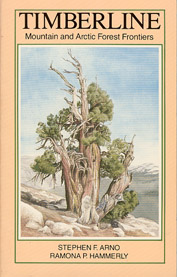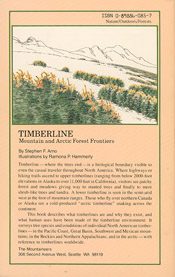 The Mountaineers, Seattle, WA, USA, 1984, 304 pages, line drawings, diagrams, maps, bibliography, index
The Mountaineers, Seattle, WA, USA, 1984, 304 pages, line drawings, diagrams, maps, bibliography, index
 ranges. Those who fly over northern Canada or Alaska see a cold-produced "arctic timberline" snaking across the continent.
ranges. Those who fly over northern Canada or Alaska see a cold-produced "arctic timberline" snaking across the continent.
| PREFACES | v |
| LIST OF PLATES | xii |
| LIST OF FIGURES | xv |
| PRINCIPAL WORKS CONSULTED | xvii |
| INTRODUCTION, with notes on classification, nomenclature, morphology, economic uses, propagation, and cultivation | 1 |
| SYNOPSIS of Families and Genera | 15 |
| KEY TO GENERA Cultivated in the British Isles | 23 |
| DESCRIPTIONS OF GENERA AND SPECIES arranged in alphabetical order | 27 |
| INDEX | 655 |